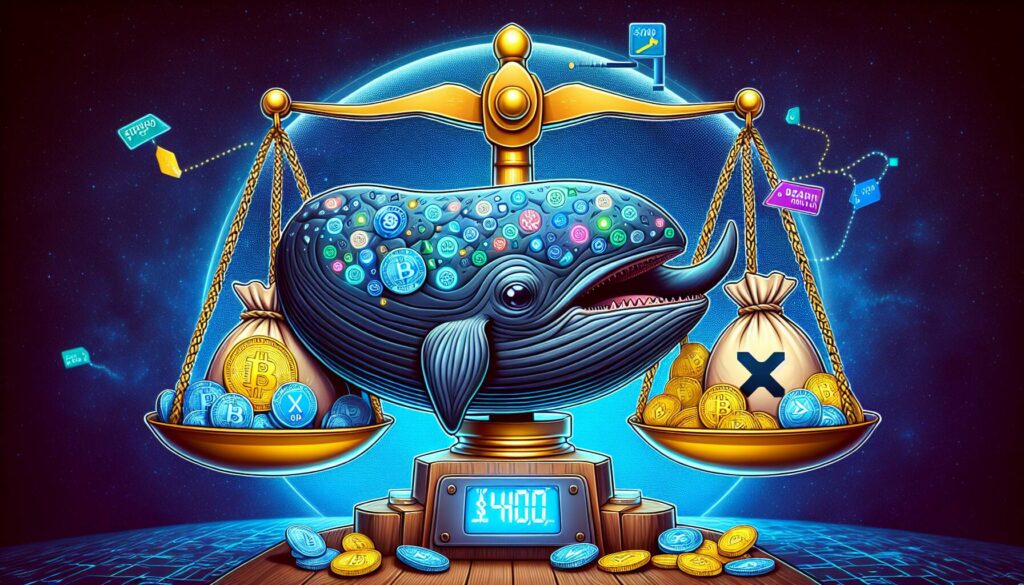The Solana Foundation has unveiled its ambitious 2027 roadmap, a strategic plan that highlights critical areas of focus for the rapidly evolving cryptocurrency landscape. As part of this initiative, the Foundation has identified market microstructures as the “most important problem in Solana today.” This bold assertion underscores the growing need for enhanced trading infrastructures and mechanisms within the Solana ecosystem.
Market microstructures refer to the various elements that contribute to the trading environment, impacting how assets like Solana’s cryptocurrency are bought, sold, and valued. By prioritizing this area, the Solana Foundation aims to address inefficiencies and challenges that traders currently face, potentially ushering in a new wave of stability and growth for the platform.
“Understanding and improving market microstructures is crucial for the future success of Solana and its vibrant community,” said a spokesperson from the Foundation.
This focus comes at a pivotal moment, as the cryptocurrency market is increasingly scrutinized for volatility and liquidity issues. The Solana Foundation’s roadmap suggests a proactive approach, aiming to enhance the trading experience for users and attract more participants to the network.
As Solana continues to carve its path in the competitive world of digital currencies, the implications of addressing market microstructures could not be more significant. By working to refine these foundational trading elements, Solana is positioning itself as a potential leader in the future of cryptocurrency, reinforcing the platform’s commitment to innovation and user-centric development.
The Solana Foundation’s 2027 Roadmap: Addressing Market Microstructures
The Solana Foundation identifies market microstructures as a critical issue in its 2027 roadmap, which could significantly impact various stakeholders in the ecosystem.
- Definition of Market Microstructures
Market microstructures refer to the mechanisms and processes that affect the trading of assets in financial markets.
- Importance in Solana Ecosystem
This issue is deemed the most pressing challenge for the Solana network, requiring immediate strategic intervention.
- Impact on Traders and Investors
- Enhanced trading efficiency could lead to better liquidity.
- Improvements could result in lower trading costs for users.
- Broader Market Implications
Solana’s approach to resolving microstructure challenges could influence broader market practices across various blockchains.
- Foundation’s Strategy for 2027
As part of the roadmap, strategic initiatives will be enacted to enhance market microstructure, potentially increasing user adoption.
Analyzing Solana’s 2027 Roadmap and Its Competitive Landscape
The Solana Foundation’s 2027 roadmap has drawn attention by labeling market microstructures as the “most important problem in Solana today.” This strategic focus positions Solana at a critical juncture, as it seeks to enhance its ecosystem’s efficiency and stability. Compared to other blockchain projects that have prioritized scalability or interoperability, Solana’s approach highlights an acute awareness of trading environments and user experience.
Competitive Advantages: By addressing market microstructures, Solana could cultivate a more robust trading ecosystem, potentially attracting institutional investors who are keen on executing large orders without significant slippage. This focus might also improve liquidity, making the platform more appealing for developers and traders alike. Unlike peers such as Ethereum, which wrestles with congestion and high fees, Solana’s aggressive roadmap aims at creating a seamless trading experience.
Disadvantages: However, the emphasis on microstructures might divert attention from other critical development areas, such as enhancing security features or expanding developer tools. While Solana’s ambition is commendable, prioritizing one issue could introduce vulnerabilities if not balanced with holistic growth. Additionally, competitors that address user experience and transaction costs concurrently may overtake Solana in terms of user adoption.
This roadmap could significantly benefit traders and developers looking for a more efficient trading environment, particularly those disenchanted with current solutions. On the flip side, existing users who expect broad advancements across the platform may become disillusioned if other areas lag behind. As the blockchain landscape evolves, Solana’s focus on microstructures is a double-edged sword that could reshape its competitive standing in the market.

















